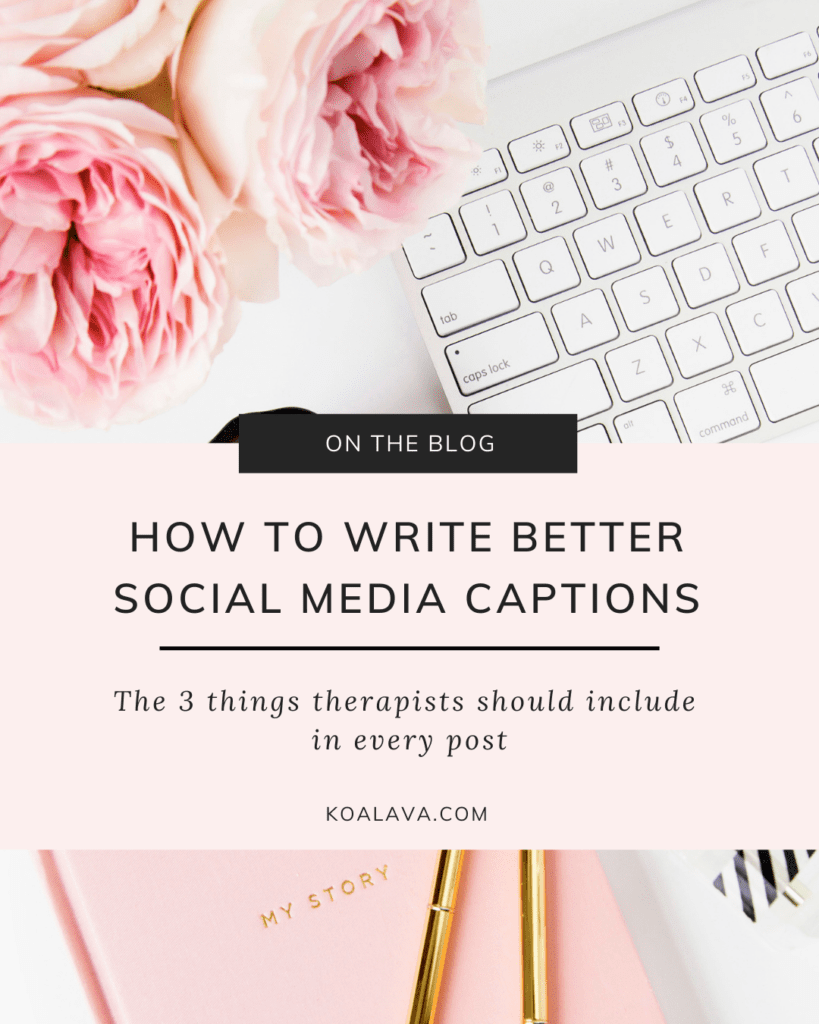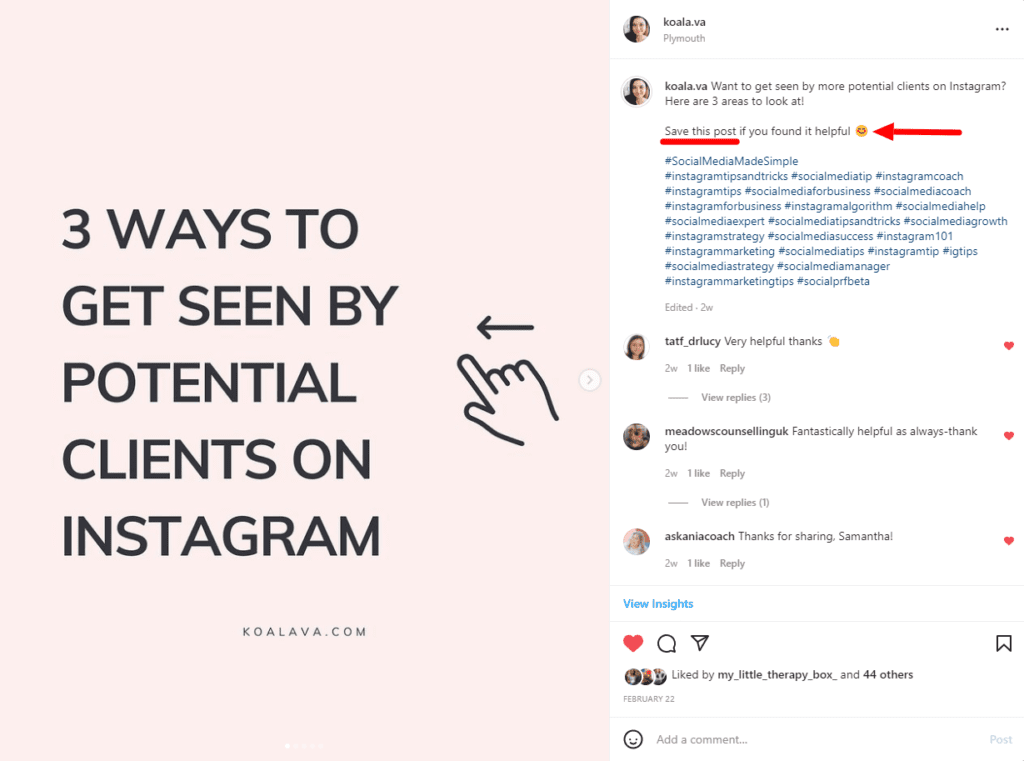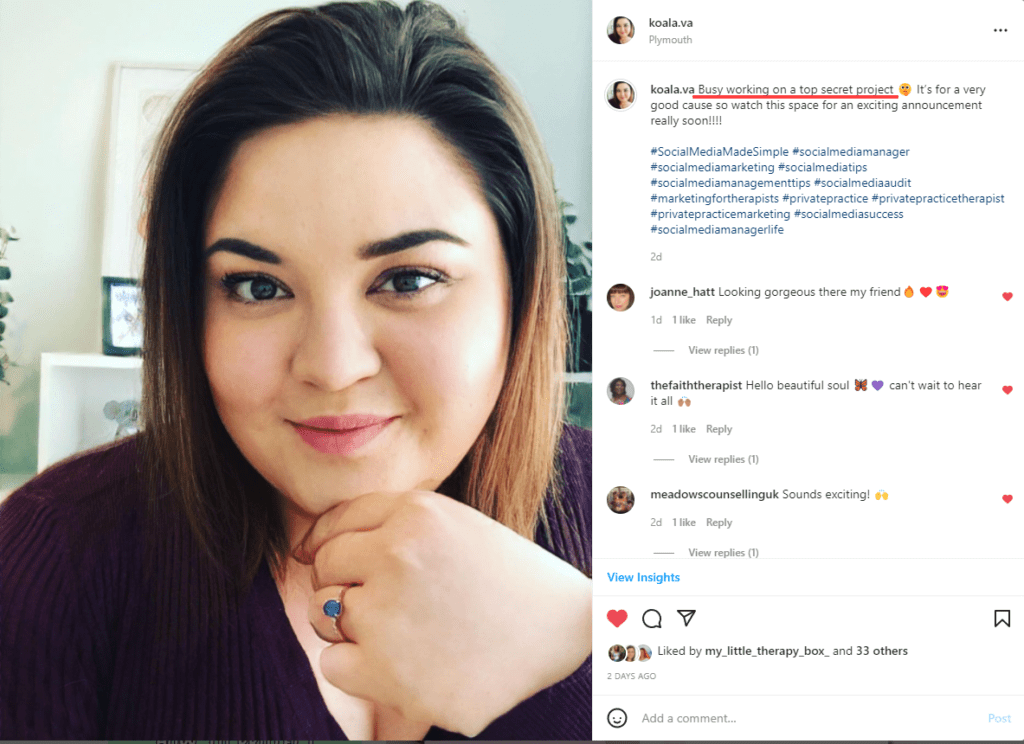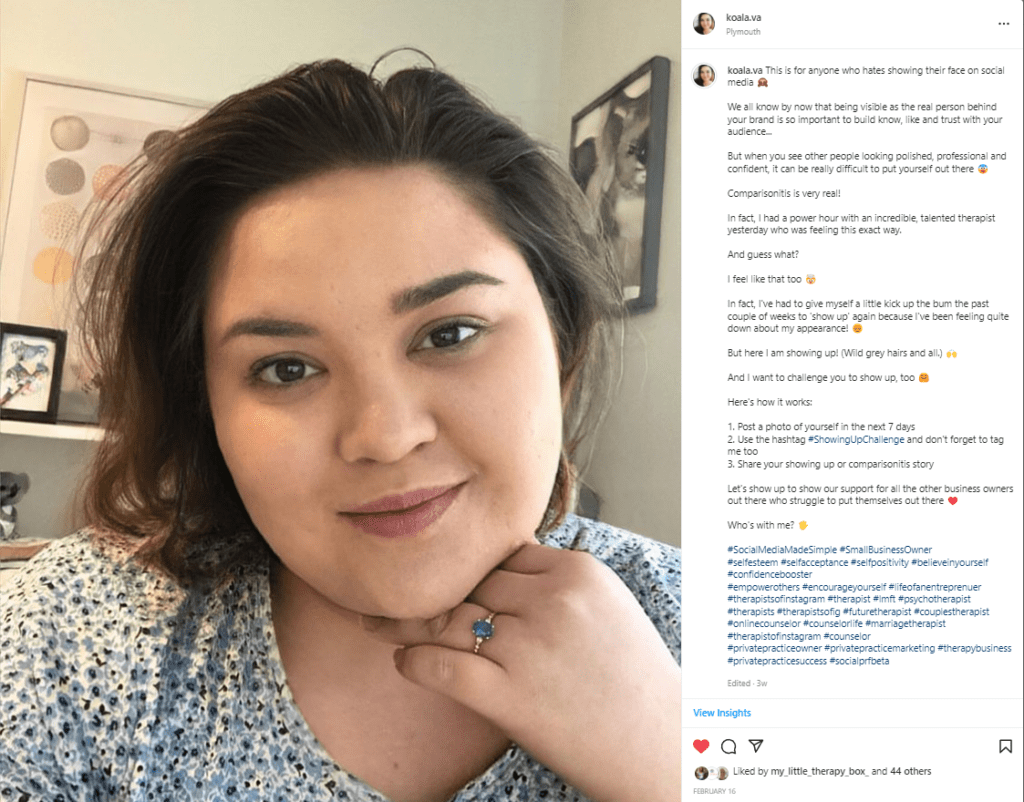Do you find writing captions for your social media posts tricky?
Do you know what you want to say, but get in a muddle when you start to write? Or maybe you don’t even get that far and end up staring at a blank screen.
Then this blog is for you!
Because today I’m going to break down the simple steps to writing better social media captions so that you can get the job done and get on with your day.

The three components of a social media post
Your social media post can be broken into three simple sections
- The headline – to grab your readers’ attention
- The body copy – broken into short sentences to make it easier to read
- The call to action – telling your reader what to do next
Let’s look at each of those in more detail.
The call to action (aka the CTA)
Now, you might be wondering why I’m starting with the CTA when it’s the last thing on the list above? Well, there’s a very good reason for that.
You see, most therapists make the mistake of writing a post then shoving a CTA at the end as an afterthought.
The problem with this is that the CTA is sometimes forgotten, or it jars with the rest of the copy, or – and this one is really common – it competes with other CTAs in the post.
So here’s what you need to do – write your CTA first.
When you write the CTA first it makes you more intentional about your post – you’re clear about the action you want your reader to take. And it helps you to focus the rest of your post towards this goal.
One post = ONE CTA.
It takes practice, but give it a try.

The headline (sometimes known as the hook)
When social media users are scrolling through their feeds, they only see the first two or three lines of a post before they have to press ‘see more.’
This means those first few words need to really grab your readers’ attention and make them stop in their tracks.
The best headlines create curiosity or provoke an emotional reaction and they also offer a benefit to the reader.
Here are some examples:
- How to get your teenager off tech without them hating you
- Why {doing something your reader does regularly} doesn’t work and what to do instead
- 5 simple ways to {do something your reader wants to achieve}
- 3 {topic} tips that actually work…

Body copy (the main post text)
People often ask me whether long or short posts are best and the answer is, there’s no right answer. You need to test what works for you.
What I can tell you is that people are more likely to read your post if it’s formatted properly.
This means it’s written in short, simple sentences – no long words or jargon – and has lots of paragraph breaks to create white space.
Reading on a screen – especially a phone – is hard work for our eyes, so big chunks of text are off-putting.
Most people (make that all of us) skim-read copy, so you need to make key points stand out.
Here’s how:
- Use bullet point lists
- Use emojis
- Create subheadings with capital letters

Be natural
A lot of my clients say they struggle to sound natural when they write, and this might be something you find difficult too. This little trick will help.
When you’re writing your social media content, imagine you’re talking to just one person. What would you say to your ideal client if they were standing in front of you?
There’s a fab free app called Otter.ai which lets you make voice recordings and then transcribes them into text for you. You might feel a bit silly at first, but it’s a great way to listen out for the words and phrases you use most.
Need more help?
If you’d like more help with writing for social media, book your social media Power Hour to discuss your posts and get feedback!
